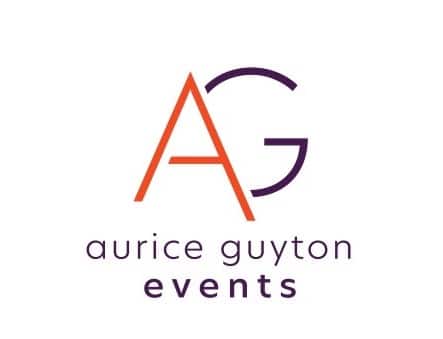Introduction to Tech Events in the Bay Area
The Bay Area is a tech giant’s playground, hosting some of the biggest and most innovative tech events in the world. Think of it as the Super Bowl for techies. Whether you’re a start-up on the brink of something big, a tech enthusiast eager to network, or a company looking to showcase groundbreaking products, understanding the landscape of tech events here is crucial. It’s where the future of technology gets unraveled, one presentation at a time. From product launches to tech talks, hackathons to conferences, the variety is vast. Each event serves as a hub for creativity, learning, and networking. Getting to know the scene is step one in planning a successful tech event. Remember, in the Bay Area, you’re not just hosting an event; you’re contributing to the tech evolution. So, dive in with eagerness and a clear plan.
Understanding Your Audience: The Key to Successful Tech Events
Knowing your audience is the heart of any successful tech event, especially in the vibrant and competitive Bay Area. Picture this: Tech enthusiasts, entrepreneurs, and investors flock here, each with different expectations. To hit the mark, start by painting a clear picture of who they are. Are they hardcore techies eager for the latest in AI? Startup owners looking for networking? Or maybe investors on the lookout for the next big thing? Tailoring your event to meet these diverse needs is crucial. Conduct surveys or use social media insights to get a feel for their interests and tailor your agenda accordingly. Remember, a well-understood audience leads to targeted content, which in turn, fills seats and sparks discussions. Keep it simple but insightful, engage them with what they love, and your tech event will not just be another gathering but the talk of the town.
Venue Selection: What to Consider for Tech Events in the Bay Area
When you’re planning a tech event in the Bay Area, picking the right venue can make or break your event. The Bay Area is home to tech giants and startups, meaning the vibe and expectations can be pretty high. First off, think about location. You want a place that’s easy for everyone to get to, whether they’re coming from downtown San Francisco or Silicon Valley. Public transport access is a big deal, as is parking for those who drive. Next, consider the tech needs. Tech events often require high-speed internet, charging stations, and advanced audio/visual systems. Make sure your venue can handle it. Size is another crucial factor. You don’t want your attendees squished into a too-small space, but you also don’t want a massive hall that feels empty. It’s about finding that sweet spot. Lastly, vibe matters. Tech folks often enjoy modern, innovative spaces that inspire creativity. So, look for venues that reflect the forward-thinking nature of the tech industry. Remember, the right venue sets the tone for your entire event in the Bay Area.
Timing Is Everything: Scheduling Your Tech Event
When planning a tech event in the Bay Area, timing isn’t just a detail—it’s a make-or-break factor. First off, avoid clashing with major tech events like Google I/O or Apple’s WWDC. These giants attract all the attention and the people, leaving your event in the shadows. Aim for a quiet period when potential attendees are hungry for networking and new info.
Weather-wise, the Bay Area is pretty mild, but consider September to November for the best vibes—cool, comfortable, and less foggy. And here’s a pro tip: check the local calendar. You don’t want to schedule your tech meet-up at the same time as a big game or festival. Traffic gets crazy, and hotels book up fast.
Last, think about the day of the week. Mid-week days, like Tuesday to Thursday, work best. People are in work mode, but not yet drained or checking out for the weekend. Plus, it’s easier to catch those flying in for your event if you avoid weekend travel frenzy.
So, aim smart with your timing. It’s not just about picking a date but aligning your event for maximum attendance and impact.
Marketing Strategies for Promoting Tech Events
When it comes to promoting tech events in the Bay Area, social media is your best friend. Use platforms like Twitter, LinkedIn, and Facebook to spread the word. Tailor your messages to suit each platform’s vibe—LinkedIn for professional network updates, Twitter for quick, engaging announcements, and Facebook for more detailed event information and discussions. Email marketing is another powerful tool. Segment your audience and send personalized invites to make them feel special. Don’t forget about community partnerships either. Partnering with local tech companies, universities, and meetup groups can amplify your reach. Finally, leverage event listing websites and tech forums specific to the Bay Area tech scene. These strategies, when applied with consistency and creativity, can significantly boost your tech event’s visibility and attendance.
Leveraging Technology for Efficient Event Management
In the Bay Area, tech events are a big deal. To stand out, you’ve got to use technology to manage your event smartly. First off, event management software is your best friend. It handles registrations, ticket sales, and even sends out reminders. It’s like having a digital assistant that never sleeps. Think about using social media, not just for hype but for real-time updates. Attendees love knowing what’s happening at the moment. Apps are another game changer. A custom app can give your attendees maps, schedules, and even a way to network with each other. And let’s not forget about feedback. Quick online surveys help you learn what worked and what didn’t, straight from the horse’s mouth. Using tech isn’t just about being cool; it’s about running your event so smoothly that everyone leaves impressed.
Networking and Engagement: Maximizing Attendee Experience
At tech events in the Bay Area, networking is the main dish, not a side order. It’s where brilliant minds meet, ideas collide, and collaborations birth. To make this interaction unforgettable, focus on engagement. Create spaces that encourage conversations. Think lounges or round tables where attendees can gather and discuss. Use tech to your advantage—event apps for instant connection exchange or dedicated hashtags for social media buzz. Don’t just let attendees bump into each other; organize targeted networking sessions or ‘speed dating’ for professionals. Remember, a successful event leaves attendees with new contacts, insights, and a feeling of community. Focus on crafting those experiences, and you’ll see the magic happen.
Sponsorships and Partnerships: Financing Your Tech Event
Navigating sponsorships and partnerships is key to nailing the financial aspect of your tech event. First off, let’s get this straight: securing sponsors isn’t just about asking for cash. It’s a dance of offering value. Think of it this way – companies get a chance to shine in front of an audience that matters to them, and you get the funds or resources to make your event a hit. Start by creating a killer sponsorship package. This should clearly explain why your event is the place to be and how it aligns with potential sponsors’ goals. Next, target the right companies. Go for those that share your audience or could benefit from exposure at your event. And remember, relationships matter. Build genuine connections with potential sponsors. Sometimes, a partnership can offer more than just money – think marketing support, speakers, or technology. Lastly, always deliver on your promises to sponsors. Show them the love and make sure they’re getting the visibility and value they signed up for. This way, they might just stick around for your next event.
Post-Event Follow-Up: Ensuring Long-Term Success
After your tech event wraps up, think it’s all done? Think again. The real magic happens in the follow-up. That’s where the seeds for long-term success are sown. So, don’t just high-five your team and call it a day. Reach out to attendees, speakers, sponsors, and even those who missed out. Send a thank-you email, share event highlights, and ask for feedback. This isn’t just being polite; it’s smart. Feedback is gold. It tells you what rocked and what flopped, paving the way for improvement. Plus, keeping the conversation going keeps you in their minds. And don’t forget about social media. Share pictures, shoutouts, and key takeaways. Make those who didn’t come wish they had. This effort ties everything together, making your event not just a one-off meet but a stepping stone for strong, ongoing relationships. Remember, the end of your event is just the beginning of your next big opportunity.
Summarizing the Essentials for Planning Tech Events
When it comes down to planning tech events in the Bay Area, success hinges on a handful of key factors. Remember, it’s all about knowing your audience, securing the right venue, leveraging technology for effective marketing, networking like a pro, and keeping tabs on your budget. First off, tailor your event to fit the techie crowd’s expectations; this means interesting topics, engaging speakers, and interactive sessions. Location is king, so pick a spot that’s accessible and vibes with the tech scene. Use social media and event apps to reach your target audience and keep them engaged. Don’t forget to network both online and in person—connections made at these events can prove invaluable. Lastly, keep an eye on your spending but invest in areas that will significantly enhance the attendee experience. By nailing these essentials, you’re setting your tech event up for success, creating an experience that’s both memorable and impactful.


